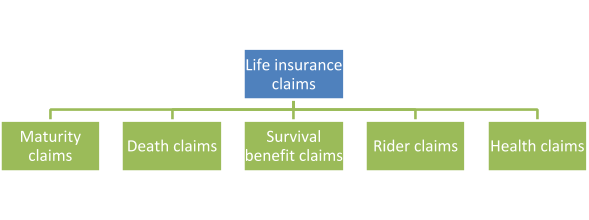Unit Linked Insurance Plans, or ULIPs as they are popularly called, are the hottest selling life insurance plans in the market. The reason is quite simple. ULIPs offer insurance coverage as well as market-linked returns and therefore take care of two goals under the same plan. Individuals, therefore, aim to maximise their wealth through ULIPs. But do you understand how ULIPs work and their return potential?
What are ULIPs?
ULIPs are market-linked insurance plans which invest your premiums in the capital market. There are different types of investment funds with a diversified portfolio. You can choose any one or more of the available funds for investing your premiums. Once invested, your premiums grow as per the market movements and give good returns. Moreover, in case of death during the policy tenure, the plan also promises a death benefit to take care of the financial loss suffered by the family. Given this combination of returns and insurance cover, ULIPs are favoured.
Features of ULIPs
Unit linked plans are quite different from other life insurance plans because of the following salient features:
- The returns under ULIPs are not guaranteed. They depend on market movements. Since the returns are not guaranteed, the maturity benefit is also not guaranteed
- The policy tenure can range from as low as 5 years to as high as 30 years
- After the first five years are over, you can withdraw from your investment partially. This is called partial withdrawal
- There are different types of investment funds and each fund has a different risk profile. You can choose any fund as per your convenience
- The plan allows you to choose the investment that you want to make, the policy tenure, coverage amount and also the investment funds
- You can switch funds during the policy tenure if your risk appetite changes
- Additional premiums can also be invested under many ULIPs through the facility of top-ups
- In case of death, the death benefit is higher of the sum assured or the fund value
- ULIPs are available for fulfilling different types of financial needs like savings need, child planning need, retirement needs, etc.
Why are ULIPs beneficial?
ULIPs are beneficial because of the following reasons –
- They are very flexible and allow you to manage your investments as per your needs
- You can invest a low and affordable amount of premium to enjoy market-linked returns
- Though the maturity benefit is not promised, it is never lower than your investment because ULIPs promise non-negative clawback additions. These additions ensure that your maturity value is higher than the money that you invested
- The facility of partial withdrawal allows you to avail funds for emergency requirements
- You get tax benefits both on the premiums that you pay and also on the benefits that you receive from the plan
ULIP calculator
The returns under ULIPs are not guaranteed. However, the Insurance Regulatory and Development Authority of India (IRDAI) allows insurance companies to show the expected returns from ULIPs by considering two conservative rates of returns – 6% and 10%. Insurance companies can, therefore, assume these two rates and allow you the possibility of ascertaining your returns through ULIP return calculators. In fact, IRDAI has mandated that there must be an illustration along with the proposal form showing the expected performance of the ULIP at the two assumed rates of interest. So, before investing your premium, you can check the returns from the plan using the ULIP calculator.
To use a ULIP calculator you would have to enter the following details –
- The amount of premium that you are paying
- Policy tenure
- Premium paying term
- Premium paying frequency
- The sum assured that you want
- The investment fund that you have selected
Based on these factors, the ULIP calculator would make a benefit illustration and show you the returns at 6% and 10% rate of interest.
Charges under ULIPs
Unit linked plans have different types of charges which are deducted from the premium that you pay before it is invested. These charges are also expressed in the benefit illustration which gives you a clear picture of the amount that is being invested in the capital market and the return thereon.
You should know and understand these charges to find out how your premiums are being invested and what returns you can expect. The different types of charges which are deducted from your premium include the following –
- Premium allocation chargeThis is the main charge which is deducted initially from the invested premium. This charge represents the cost incurred on selling you the policy. The premium allocation charge basically includes the commission paid to the insurance agent to source the policy. This charge is deducted upfront from the premium. The charge is high on the first year premium. From the second year onwards, the charge reduces.
- Policy administration chargeThis charge is levied for the administrative costs incurred by the insurance company to manage your policy. This is a monthly charge wherein the fund value is debited by the cancellation of units.
- Fund management chargeFund management charge is the fee payable to fund managers who manage the fund’s portfolio to ensure maximum returns. The charge differs across different funds.
- Mortality chargeMortality charge is the cost of insurance. Since the plan also covers your death risk, the cost of this death risk is called the mortality cost. Mortality charge depends on your age and the sum assured. Higher the age and/or the sum assured, higher would be the cost.
- Policy discontinuation chargeIf you surrender the policy before the completion of five years, a policy discontinuation charge would be applied. This charge would be deducted from your fund value until the first five years are completed.
How ULIP return calculators work?
While the ULIP calculator shows you the expected returns at 6% and 10%, you should understand how the returns are calculated. So, here’s a step-by-step process of calculation of returns under ULIPs:
- You pay the premium and choose the sum assured term and investment fund
- The premium allocation charge is deducted from the premium and the premium is invested in the chosen fund
- The fund performs as per the market
- Other charges are deducted from the fund value monthly or yearly as the case may be
- The fund, then, grows as per the growth in the capital market and you get the fund value when the policy matures
#5 Best ULIPs to buy
Now you know what are ULIP calculators, how they work and the different charges associated with ULIPs. So now it’s time to check out the best ULIP plans in the market which have the potential to offer the highest returns on your premiums. Here are the top ULIPs that you can buy –
- Bajaj Allianz Future Gain PlanOne of the most popular ULIPs offered by Bajaj Allianz, the product has the following features –
- There are two investment strategies. You can choose to invest as per a readymade strategy or manage your funds yourself
- The premium allocation charges are very low
- Riders are available for a more comprehensive coverage
- You can increase your investments through top-ups
Plan parameters
Entry age 1-60 years Policy term 10 to 30 years Premium paying term 5 to 30 years Annual premium Minimum – INR 25,000 Maximum – INR 12 lakhs
Sum assured 7 to 15 times the annual premium - HDFC Life Click 2 Invest ULIP PlanThis is also a popular plan which has the following features –
- Premium can be paid at once, for a limited period or regularly throughout the policy term
- There are eight fund options under the plan
- The plan can be bought online by filling up a simple medical questionnaire
Plan parameters
Entry age 30 days to 65 years Policy term 5 to 20 years Premium paying term Single pay or 5 to 20 years Annual premium Minimum – INR 12,000 Maximum – no limit
Sum assured 7 or 15 times the annual premium or 1.25 times the single premium - ICICI Pru Signature PlanThis is a new ULIP launched by ICICI Prudential Life. The plan has the following features –
- No premium allocation charge is deducted from the premium
- On maturity, the mortality charge and policy administration charges are refunded back
- Wealth boosters are added to the fund value every five years from the end of the 10th policy year
- Whole life option is available under the plan wherein coverage is allowed for up to 99 years
- There are four investment strategies under the plan and you can choose anyone as per your needs.
Plan parameters
Entry age 0-60 years Policy term 10 to 30 years or whole life till 99 years of age Premium paying term 5 to 30 years Annual premium Minimum – INR 30,000 Maximum – no limit
Sum assured 7 or 10 times the annual premium - ICICI Pru Life Time Classic PlanThis plan is also a popular ULIP which has the following features –
- There are nine different funds to invest your premium
- Free partial withdrawals are allowed under the plan
- You can choose a readymade investment strategy too if you want to invest your premiums automatically
- Loyalty additions and wealth boosters are also added to the fund value
Plan parameters
Entry age 0 to 75 years Policy term 10 to 30 years Premium paying term 5 to 25 years or single pay Annual premium Minimum – INR 30,000 Maximum – no limit
Sum assured 7 to 30 times the annual premium - TATA AIA Life Insurance Fortune Pro PlanFortune Pro is a flexible ULIP which allows premium payments at once or for a limited period. The features of the plan are as follows –
- Loyalty additions are added to the fund value besides the market-linked returns
- There are 11 fund options under the policy
- There are three optional riders for a wider coverage
- There are two optional investment strategies to handle your investments better
Plan parameters
Entry age 30 days to 59 years Policy term 15 to 40 years Premium paying term 5 to 20 years or single pay Annual premium Minimum – INR 50,000 Maximum – INR 5 lakhs
Sum assured Up to 30 times the annual premium
- Bajaj Allianz Future Gain PlanOne of the most popular ULIPs offered by Bajaj Allianz, the product has the following features –
So, choose any of these plans and you would get a ULIP which would give you the best returns along with flexible benefits.
Frequently Asked Questions
- How can I buy a unit-linked plan?
You can buy a unit-linked plan online or offline. Buying offline means buying it through a life insurance agent or through the company’s offices. In these cases, you cannot compare the plan with other ULIPs. Online mode is better as it is quicker and also allows you to compare. You can choose Turtlemint to buy the plan online. Turtlemint is tied-up with leading life insurance companies and you can find the best ULIP on Turtlemint’s platform. You just have to visit https://turtlemint-stage.dreamhosters.com/life-insurance, choose your financial goal, provide your details and you can compare the best ULIPs. You can then select one, pay the premium online and the policy would be issued.
- How can I buy a unit-linked plan?
- Is mortality charge deducted for the entire duration of the plan?
No, mortality charges are deducted till the time the fund value equals the sum assured. Once the fund value exceeds the sum assured, the charge is no longer deducted from the premium.
- Is mortality charge deducted for the entire duration of the plan?
- Are 6% and 10% interest rates guaranteed under ULIPs
No, returns are not guaranteed under ULIPs. 6% and 10% are assumed rates which are used for illustration purposes only.
- Are 6% and 10% interest rates guaranteed under ULIPs
- Is the premium allocation charge deducted every year?
Premium allocation charge is deducted only in those years when you pay the premium.
- Is the premium allocation charge deducted every year?



















